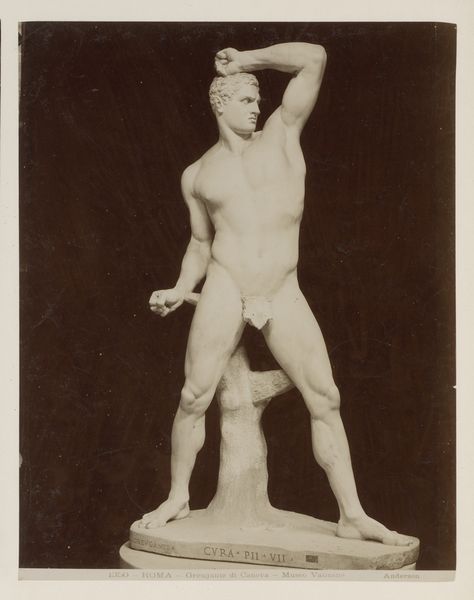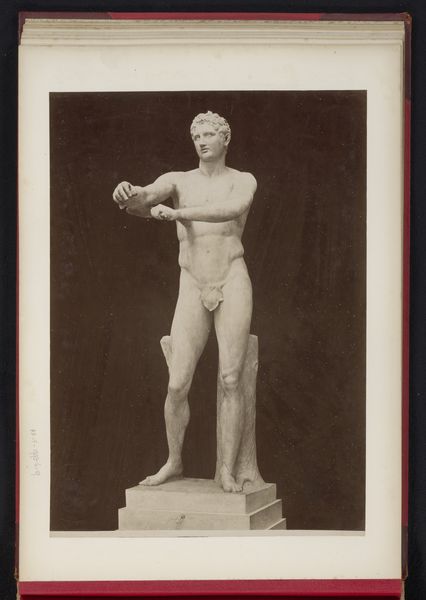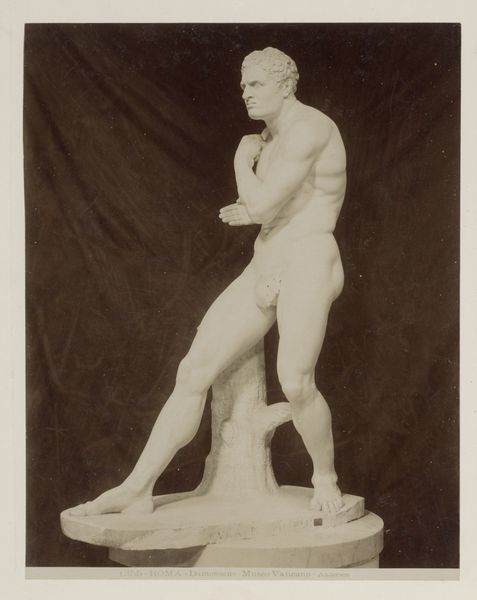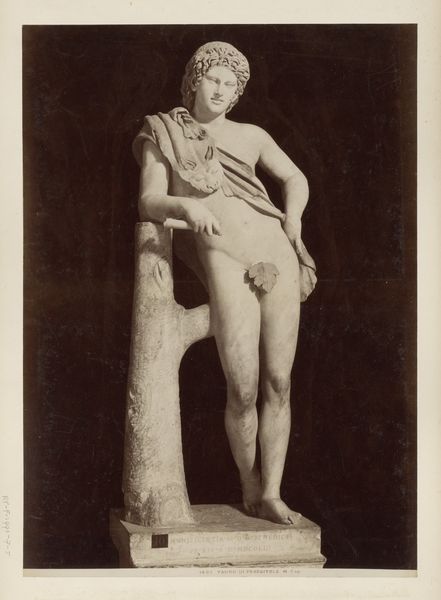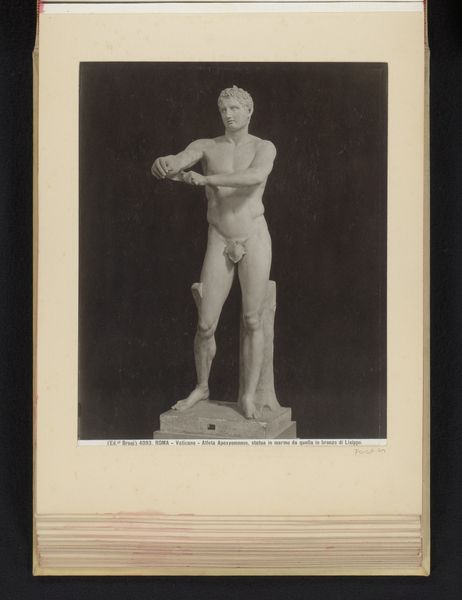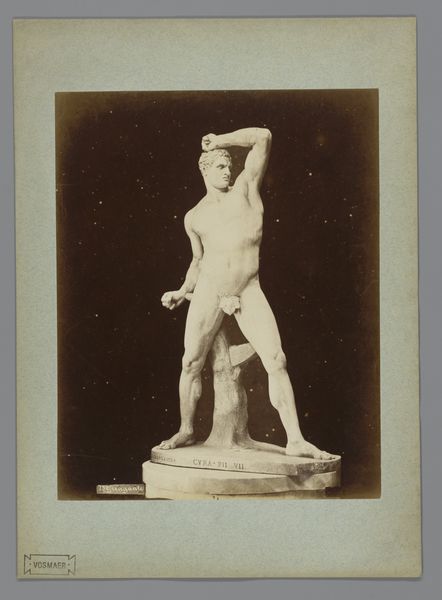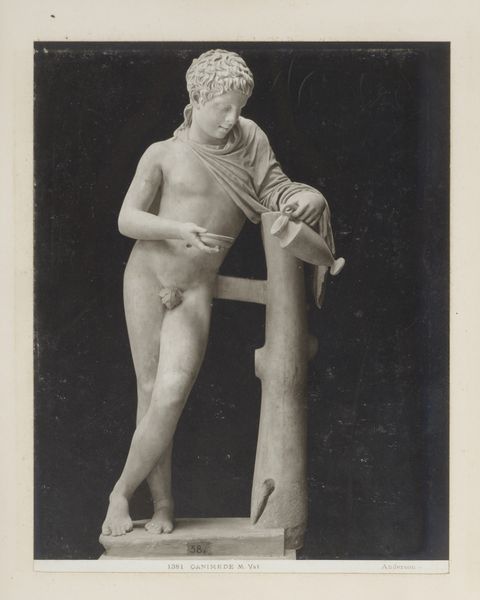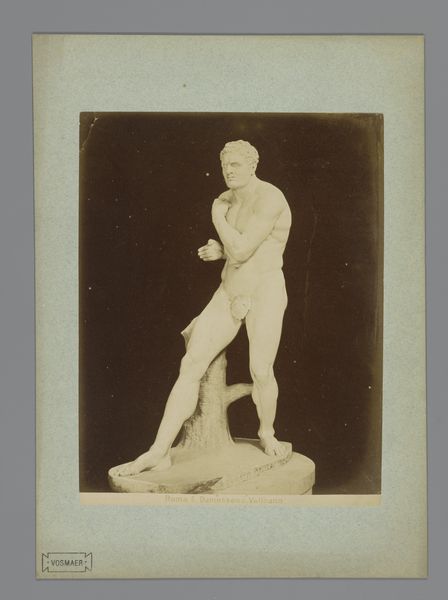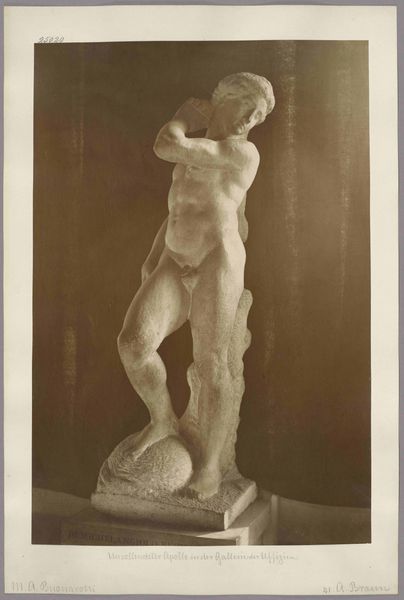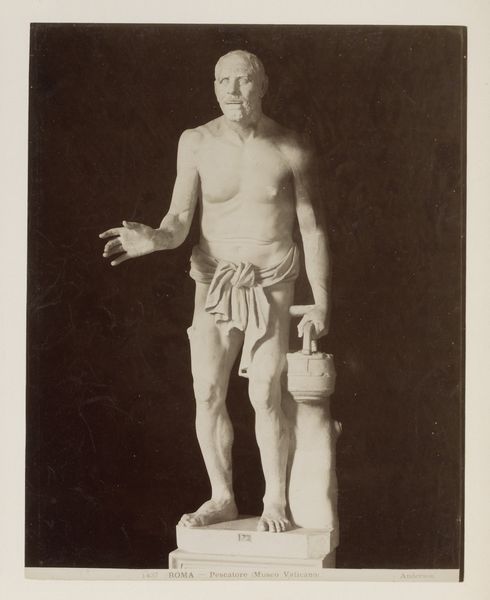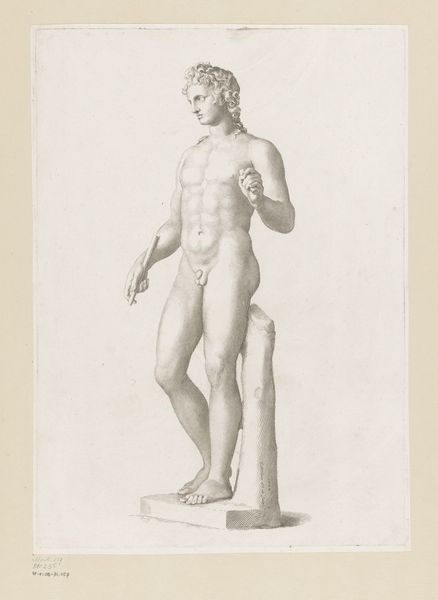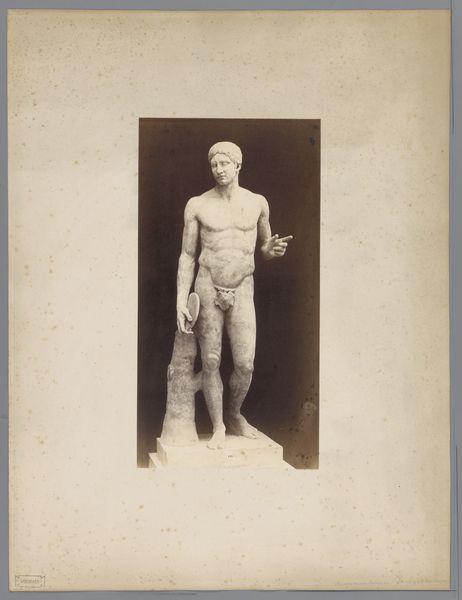
Sculptuur van Apoxyomenos door Lysippus (kopie), Vaticaan 1880 - 1920
0:00
0:00
jamesanderson
Rijksmuseum
print, photography, sculpture, gelatin-silver-print
#
portrait
# print
#
greek-and-roman-art
#
classical-realism
#
figuration
#
photography
#
sculpture
#
gelatin-silver-print
#
nude
#
realism
#
statue
Dimensions: height 258 mm, width 195 mm
Copyright: Rijks Museum: Open Domain
Editor: This photograph captures a sculpture, the Apoxyomenos, a copy of a work by Lysippus, dating from between 1880 and 1920. It looks so life-like. What catches your eye about this particular image? Curator: Immediately, I'm drawn to the print itself – this gelatin silver print. It's a multiple, mass-produced object documenting a sculpture. It raises questions about value, labor, and the reproduction of classical ideals. Who was Anderson, and how did their process of photographic reproduction democratize access to classical art? Editor: That’s a really interesting perspective. I was focused on the form, but the photograph as an object is just as compelling. Is it fair to even consider a copy of a copy in terms of democratization of art? Curator: Absolutely. This print makes the Greek ideal physically available, though mediated, to a broader audience than those who could access the sculpture itself. Consider the dark background and how it makes the subject of the photograph come into being – a social product that brings the viewer into communion with both the sculpture and the material processes involved. It isn't just the artwork, it's the labor of photographers like James Anderson that deserve acknowledgement, as well as their audiences who consume the photographs. Editor: So you’re suggesting that understanding the materials and mode of reproduction changes how we value or interpret the work? Curator: Precisely! It redirects our focus from solely aesthetic contemplation to also thinking about production, distribution, and access – the tangible means through which we engage with the art. Editor: This has really changed my understanding; seeing it not just as a picture of a statue, but as an object with its own story to tell about labor and consumption. Curator: Indeed! Paying attention to these aspects of art expands what counts as worthy of analysis.
Comments
No comments
Be the first to comment and join the conversation on the ultimate creative platform.
